Abstract
In confirmation and extension of observations by Carp and his associates, brain tissue and sera from patients with multiple sclerosis (MS) were found to harbor an agent which induces a transitory depression in polymorphonuclear leukocytes (PMN) in mice as well as in rats, hamsters, and guinea pigs. All of eight MD brains contained this agent at titers as high as 10(-9)/g of brain tissue. The agent was found in MS sera at titers up to 10(-3)/ml of serum, but its presence depended to some extent on the clinical status of the patients; it was observed more frequently in sera of patients with active disease (73%) thatn in sera of patients with quiescent disease (31%). Control brain tissues or sera failed to induce PMN depression. The apparently MS-associated agent (MSAA) passed through 50-nm but not 25-nm membrane filters (Millipore Corp.) and was largely sedimented at 105,000 X g but not at 50,000 X g for 1 h. It multiplied to high titers in the central nervous tissue of the inoculated animals and could be serially transmitted from animal to animal by passage of brain homeganates. Various observations and considerations appear to preclude that MS-associated agent represents an indigenous animal virus. Although its role in MS remains to be determined, it should be considered a candidate for the etiology of this disease.
Full text
PDF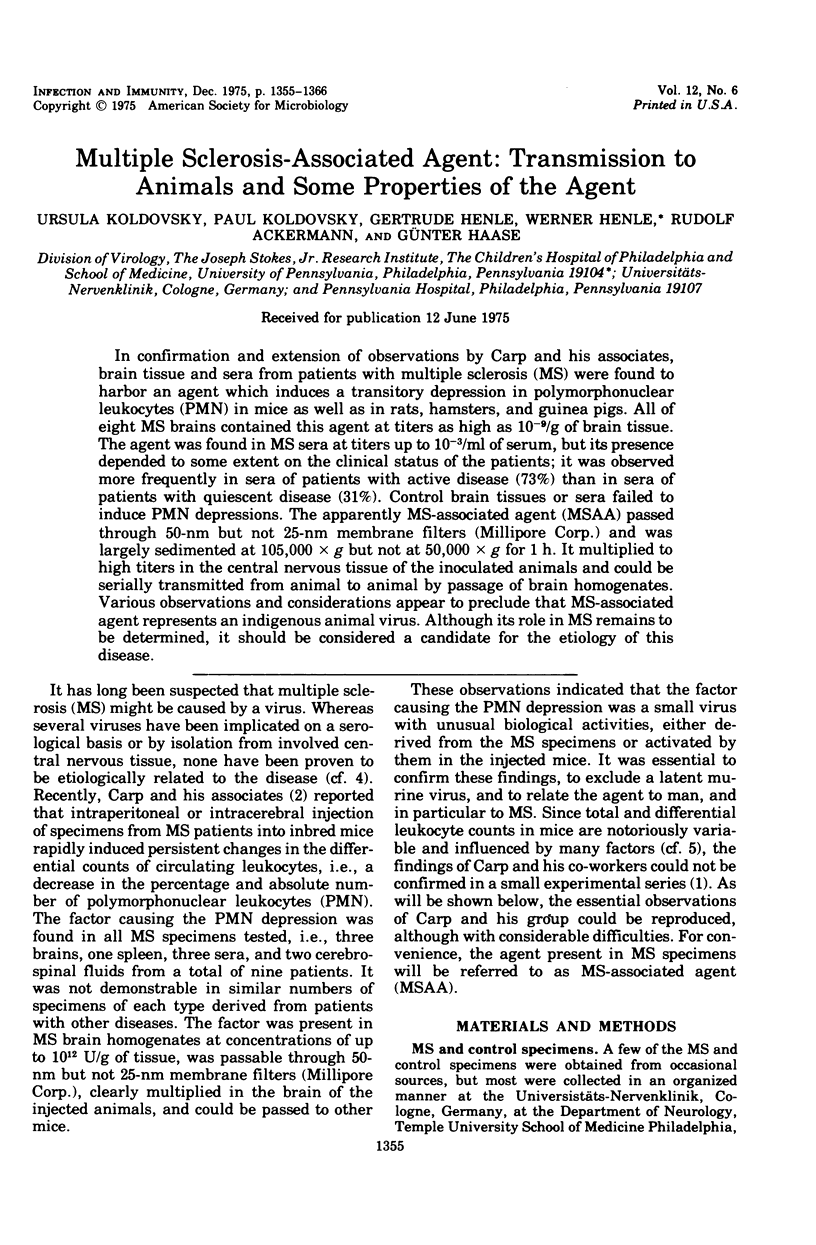
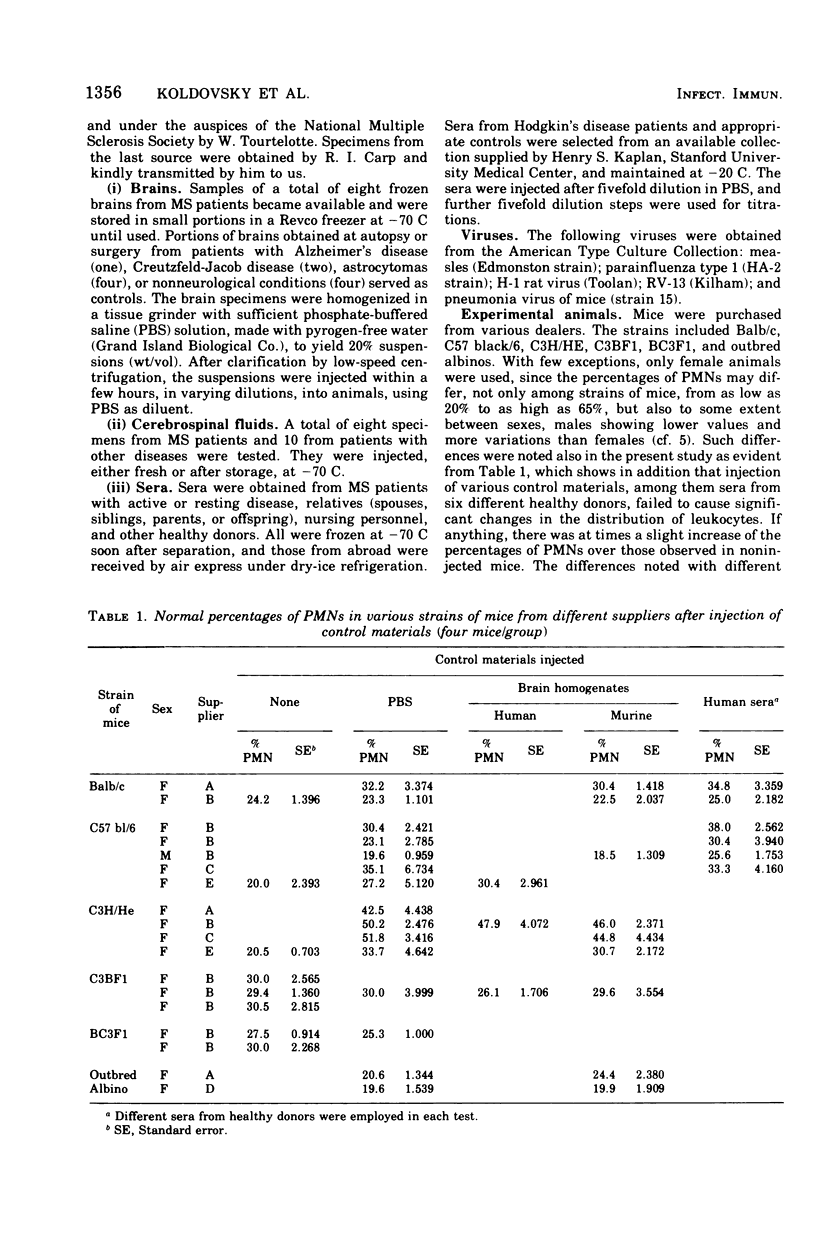
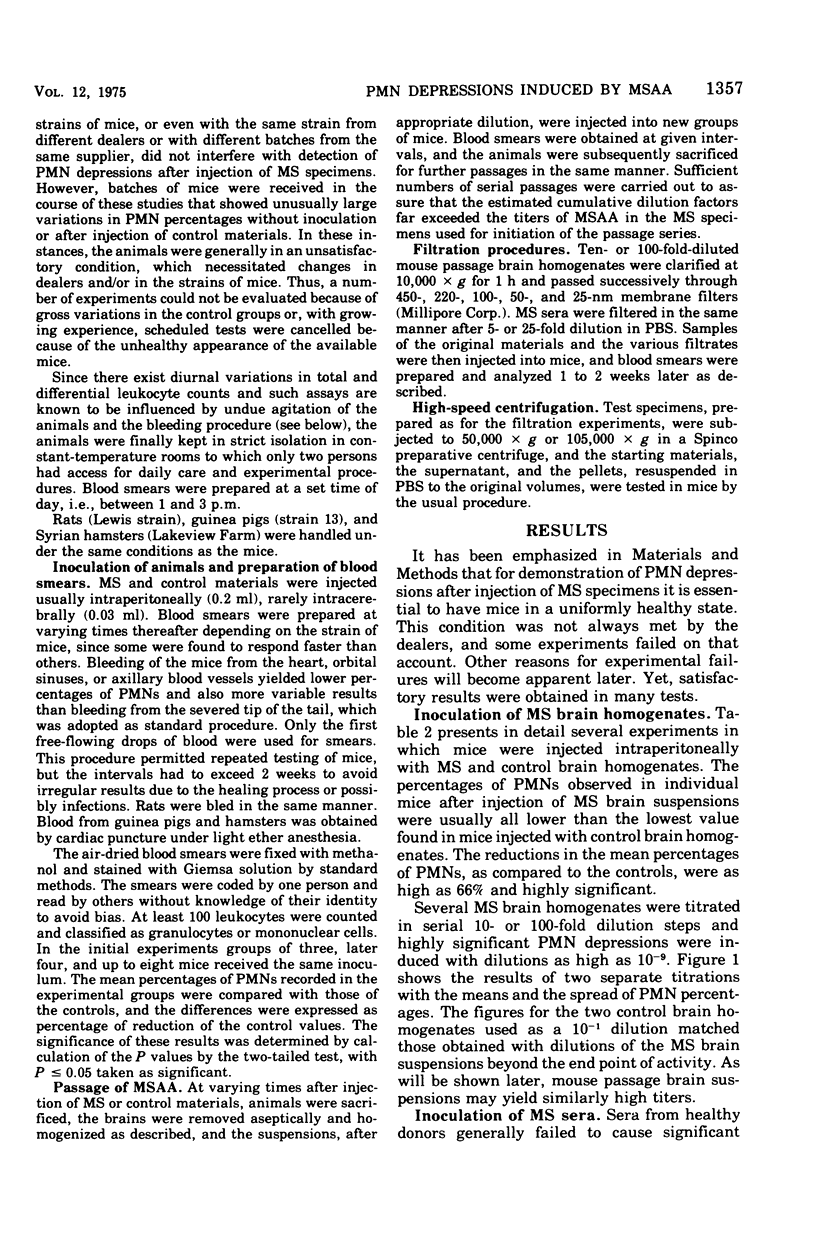
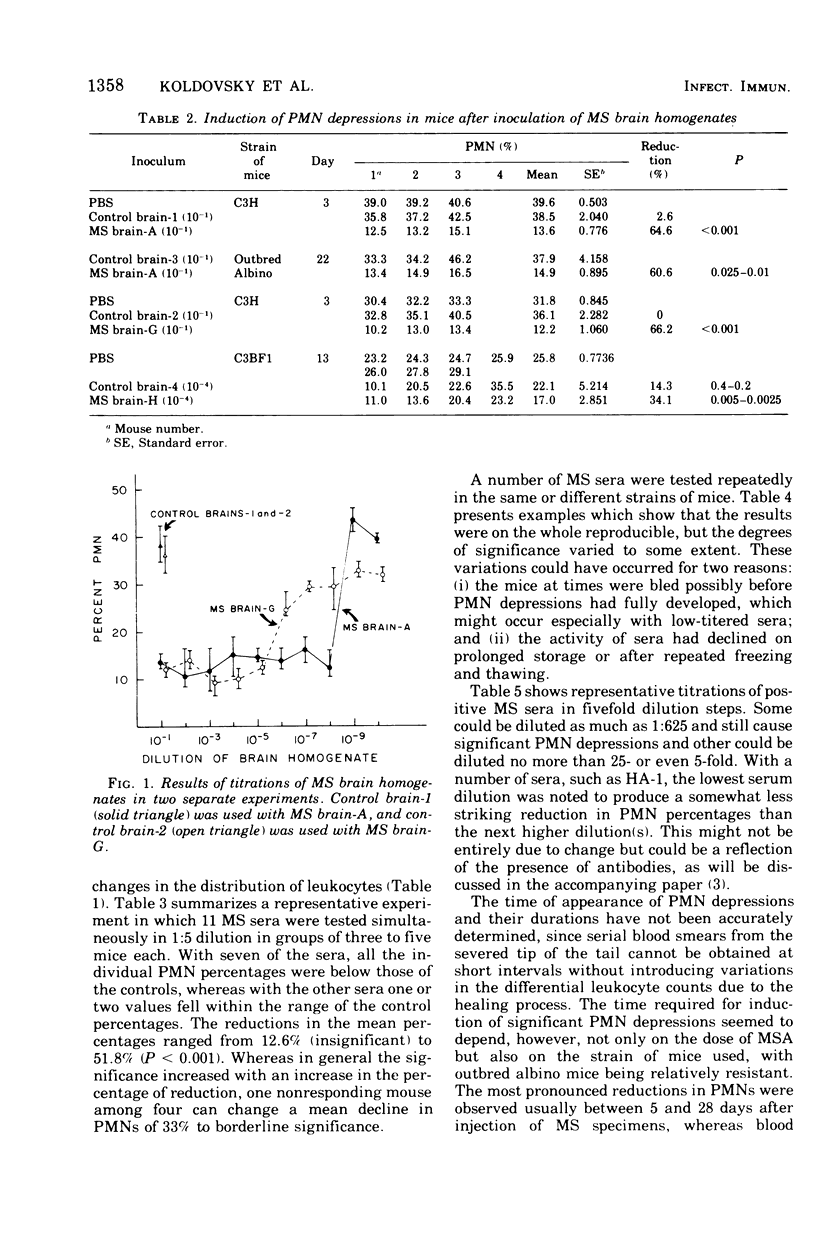
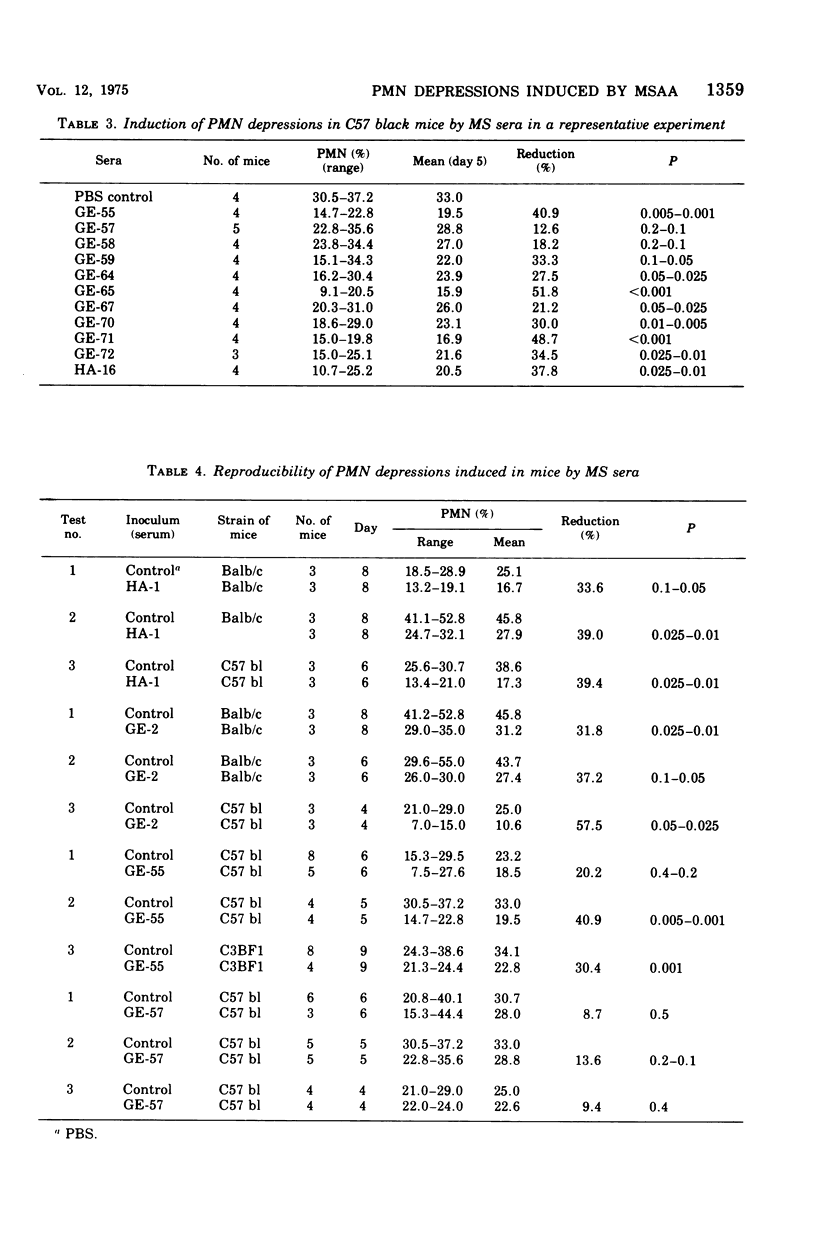
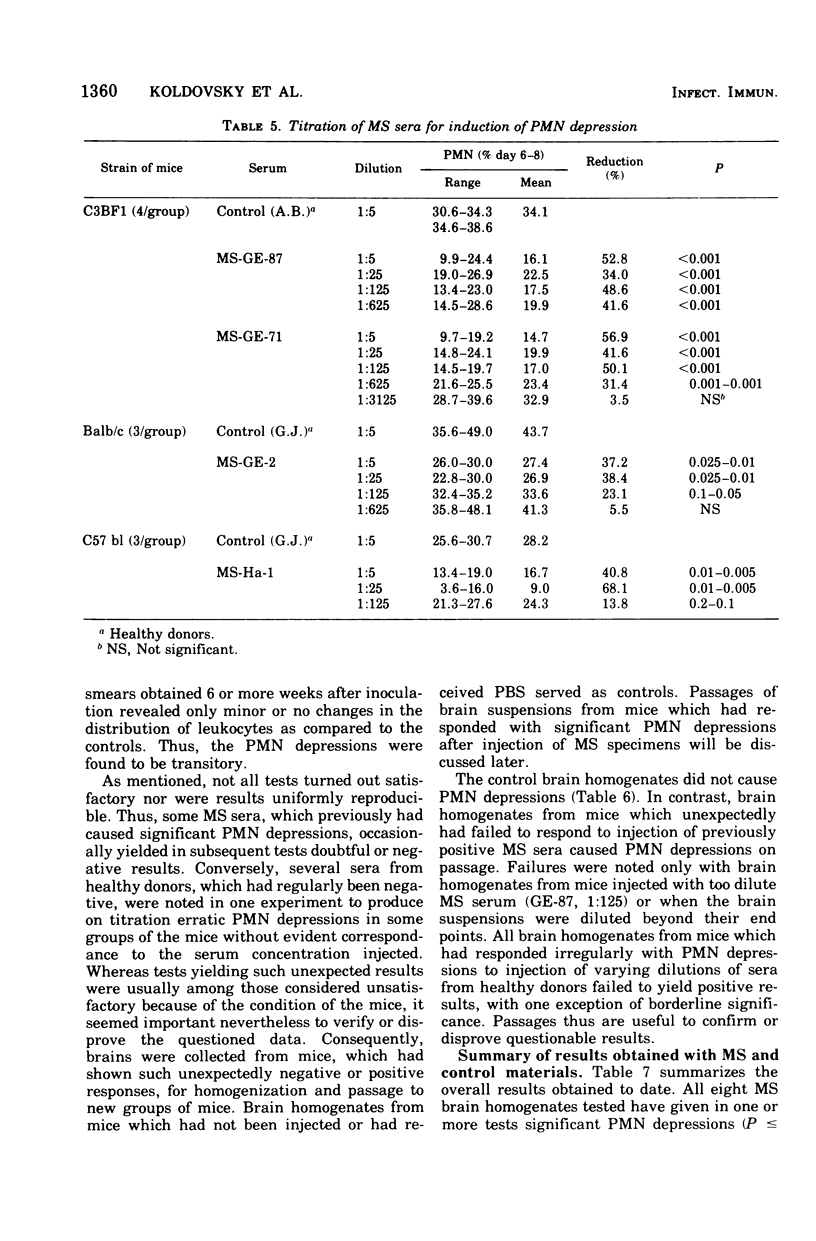
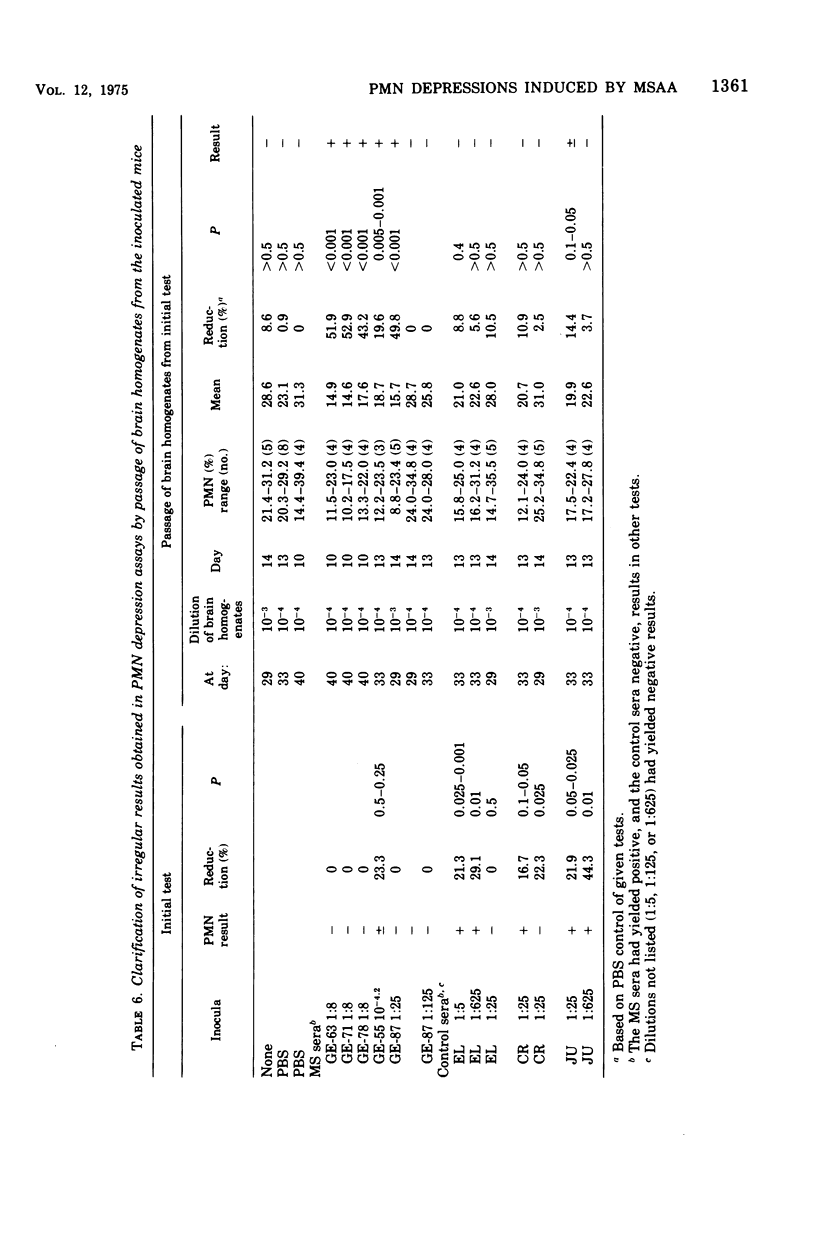
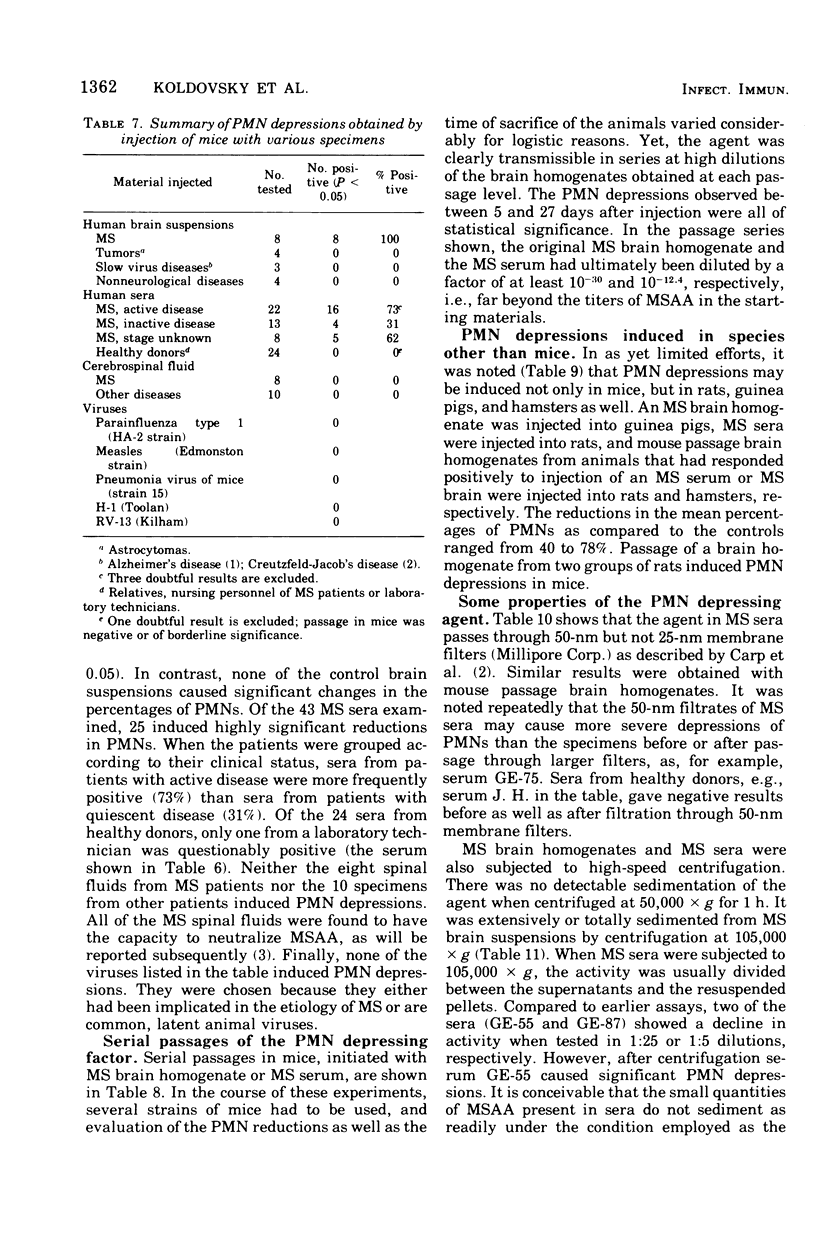

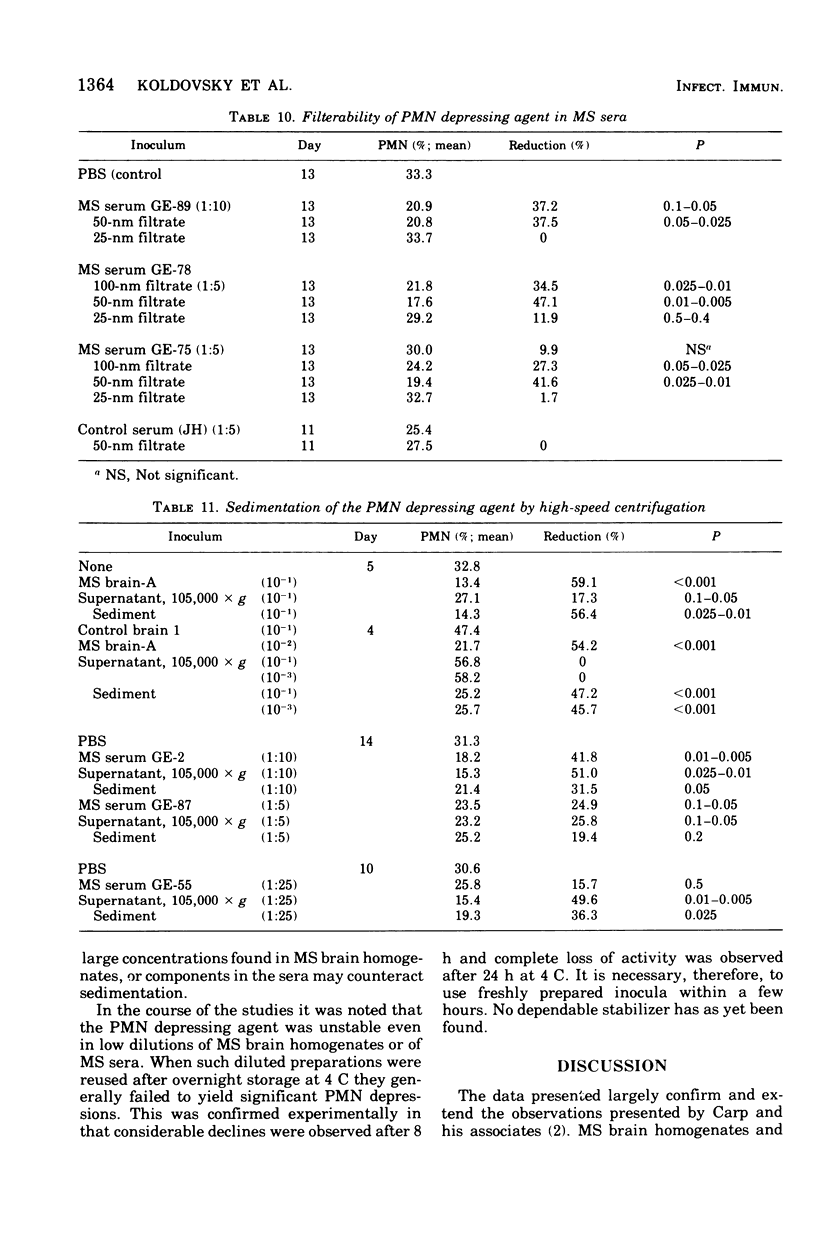
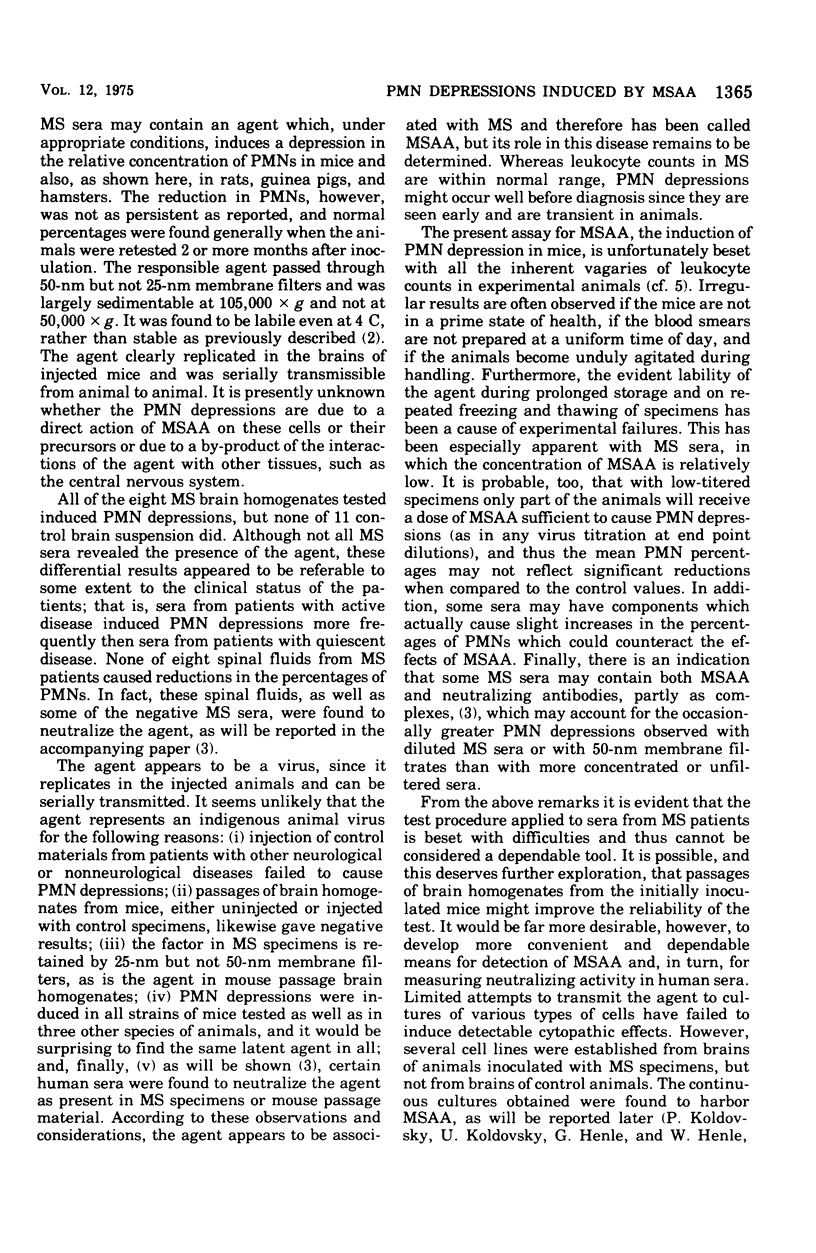
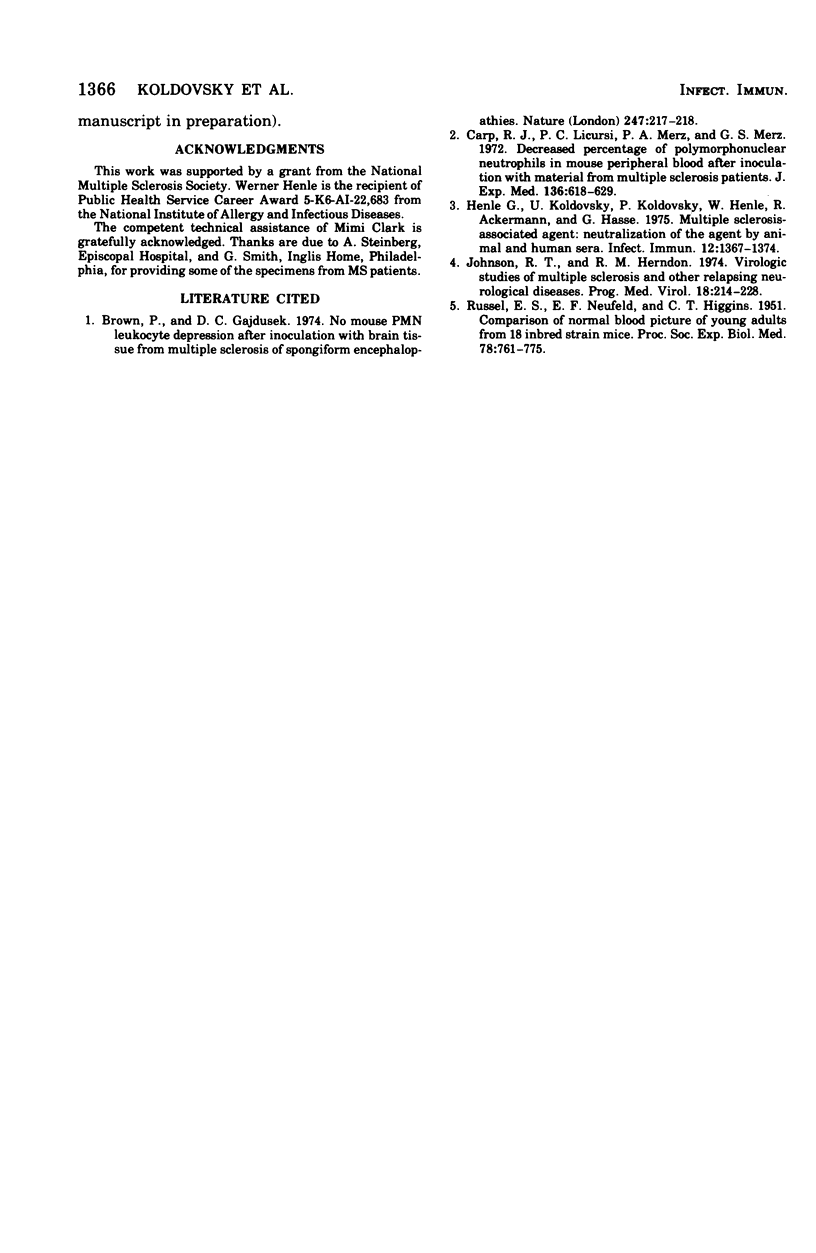
Selected References
These references are in PubMed. This may not be the complete list of references from this article.
- Brown P., Gajdusek D. C. No mouse PMN leukocyte depression after inoculation with brain tissue from multiple sclerosis or spongiform encephalopathies. Nature. 1974 Jan 25;247(5438):217–218. doi: 10.1038/247217a0. [DOI] [PubMed] [Google Scholar]
- Carp R. I., Licursi P. C., Merz P. A., Merz G. S. Decreased percentage of polymorphonuclear neutrophils in mouse peripheral blood after inoculation with material from multiple sclerosis patients. J Exp Med. 1972 Sep 1;136(3):618–629. doi: 10.1084/jem.136.3.618. [DOI] [PMC free article] [PubMed] [Google Scholar]
- Henle G., Koldovsky U., Koldovsky P., Henle W., Ackermann R., Haase G. Multiple sclerosis-associated agent: neutralization of the agent by human sera. Infect Immun. 1975 Dec;12(6):1367–1374. doi: 10.1128/iai.12.6.1367-1374.1975. [DOI] [PMC free article] [PubMed] [Google Scholar]
- Johnson R. T., Herndon R. M. Virologic studies of multiple sclerosis and other chronic and relapsing neurological diseases. Prog Med Virol. 1974;18(0):214–228. [PubMed] [Google Scholar]
- RUSSELL E. S., NEUFELD E. F., HIGGINS C. T. Comparison of normal blood picture of young adults from 18 inbred strains of mice. Proc Soc Exp Biol Med. 1951 Dec;78(3):761–766. doi: 10.3181/00379727-78-19210. [DOI] [PubMed] [Google Scholar]


